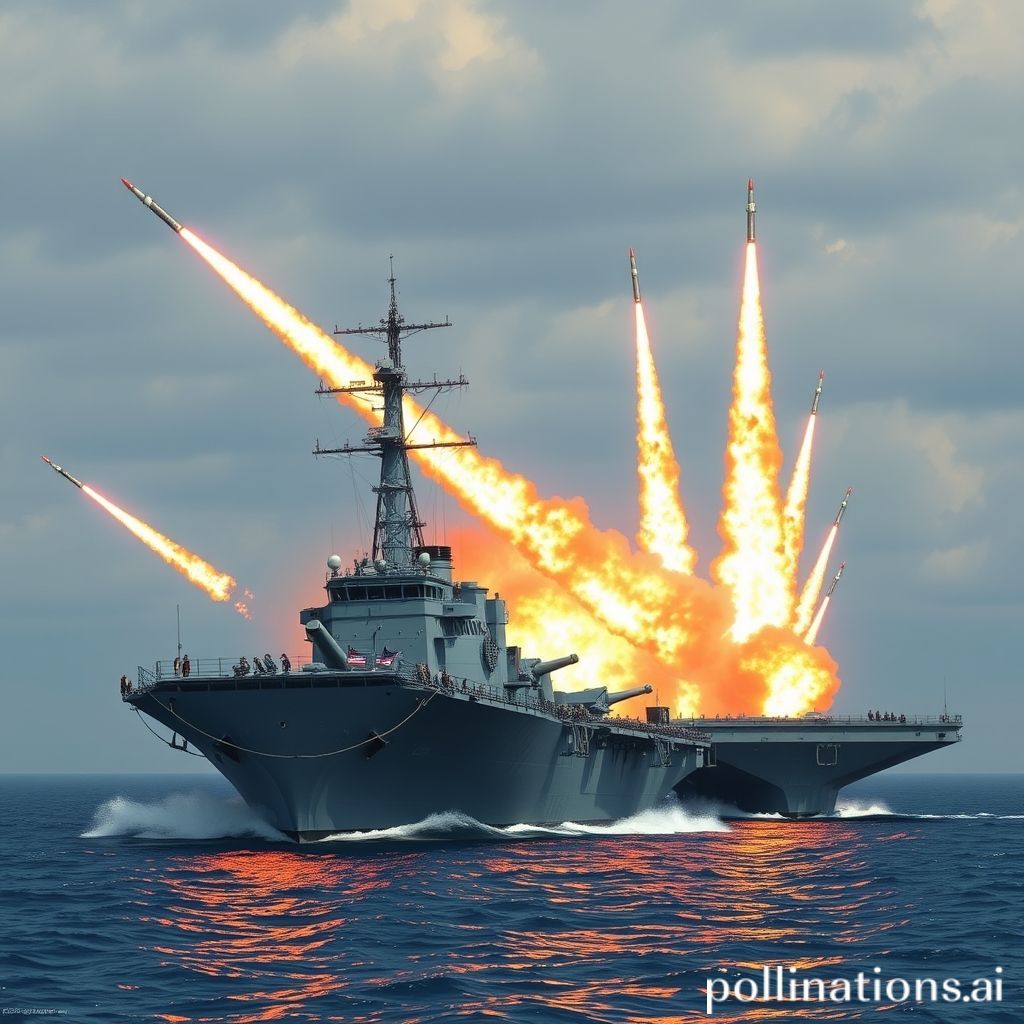
US Navy warships are firing top ballistic missile interceptors at an 'alarming rate,' admiral says
Are We Burning Through Missile Defenses Too Quickly? An Alarming Trend in the US Navy
Hey folks, have you ever considered the sheer amount of technology packed into a modern warship? We often hear about offensive capabilities, but what about defense? Recently, a high ranking US Navy Admiral raised concerns about something quite crucial the rate at which our warships are firing off their most advanced ballistic missile interceptors. This isn't just about running out of ammo it's about the long term strategic implications for national security.
The Admiral's Warning Signals
Details are still emerging, but the core issue is this: US Navy vessels equipped with the Aegis Combat System, the backbone of our ballistic missile defense, are engaging targets and expending Standard Missile 3 (SM 3) interceptors at a pace that some find unsustainable. The SM 3 is a marvel of engineering, designed to knock out incoming ballistic missiles in space. It's our last line of defense against a potentially devastating attack.
The Admiral's comments, which were initially reported through defense news outlets, have ignited a debate within military circles. Are we facing a genuine shortage? Is our current strategy leading to an inefficient use of these expensive and vital interceptors?
Why is This Happening?
Several factors likely contribute to this accelerated expenditure:
Increased Threat Environment: Global tensions are undeniably on the rise. Countries like North Korea are actively developing and testing ballistic missiles. This necessitates a higher state of alert and more frequent engagement scenarios, whether real or simulated.
Evolving Adversary Tactics: Our potential adversaries are getting smarter. They are developing countermeasures, like decoys and maneuvering warheads, to try and overwhelm our missile defenses. This forces our systems to work harder and potentially expend more interceptors per threat.
Training and Readiness Exercises: The Navy rightly conducts rigorous training exercises to ensure its personnel are prepared for any eventuality. These exercises involve simulating missile attacks and practicing intercept procedures. While crucial for readiness, they also contribute to the overall expenditure of SM 3 missiles.
The Cost of Defense: A Breakdown
The SM 3 isn't cheap. Each missile costs millions of dollars. This raises several important questions:
| Aspect | SM 3 Interceptor | Alternative Defense |
| | | |
| Cost per Unit | High | Varies |
| Effectiveness | Very High | Depends on system |
| Engagement Range | Long | Shorter |
| Development Time | Long | Shorter (potentially) |
Consider the above comparison of the SM3 interceptor with Alternative Defenses.
Budgetary Implications: Can we afford to maintain this rate of expenditure without impacting other critical defense programs?
Resource Allocation: Are we investing enough in research and development to create more cost effective missile defense technologies?
Strategic Planning: Do we need to re evaluate our overall missile defense strategy to prioritize the most critical threats and optimize the use of our interceptors?
The Broader Strategic Picture
The rate at which we use these interceptors also has significant implications for our overall strategic posture. A depleted stockpile could weaken our deterrent capability, emboldening potential adversaries. It could also limit our ability to respond to future crises.
Furthermore, this situation highlights the importance of layered defense. The SM 3 is just one component of a larger system that includes early warning satellites, ground based interceptors, and other defensive measures. We need to ensure that all these components are working together effectively to provide comprehensive protection.
What Can Be Done? Possible Solutions
Addressing this issue requires a multifaceted approach:
Increased Production: Boosting the production of SM 3 missiles to replenish stockpiles and meet future demand.
Technological Advancements: Investing in research and development to create more advanced and cost effective interceptors. This could include directed energy weapons or other innovative technologies.
Improved Tactics: Refining our engagement tactics to minimize the number of interceptors required per target. This could involve better discrimination between real threats and decoys.
Diplomacy: Pursuing diplomatic solutions to reduce global tensions and prevent the proliferation of ballistic missiles.
A Personal Reflection
As someone who follows defense matters closely, this news is concerning. It's a reminder that maintaining a strong national defense is a constant challenge that requires vigilance, innovation, and strategic thinking. It is vital that we invest in technologies that can defend us from modern threats and also have a well rounded strategy. The next couple years will be crucial for strategic defense. We are facing threats never seen before and we need to be prepared.
Comments
Post a Comment